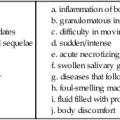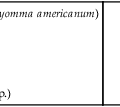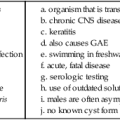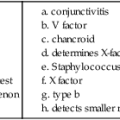Quality in the Clinical Microbiology Laboratory
1. Distinguish between the terms total quality management (TQM), continuous quality improvement (CQI), performance improvement (PI), quality assurance (QA), LEAN, and Six Sigma.
2. Describe the quality program associated with the microbiology laboratory.
3. Identify acceptable guidelines for specimen collection and transport, and give examples of unacceptable specimens.
4. State the purpose of the Standard Operating Procedure Manual.
5. Explain the requirements for laboratory personnel, use of reference laboratories, and elements of patient reports.
6. Define proficiency testing (PT), and outline the necessary steps to achieve successful results.
7. Design a log to check performance for instruments and media used in the microbiology laboratory.
8. Explain the requirements for Antimicrobial Susceptibility Tests (AST).
9. Compare the maintenance of reference quality control stocks in bacteriology, mycology, mycobacteriology, virology, and parasitology.
10. Outline a QA program for the microbiology laboratory to include all phases of infectious disease diagnosis, and differentiate between external and in-house QA audit programs.
11. Describe daily monitoring activities by microbiologists and supervisors that result in providing quality care to the patient population.
CQI and PI, through well-thought-out programs of QC and QA, are part of the requirements for laboratory accreditation under Clinical Laboratory Improvement Amendments (CLIA, 1988).
Specimen Collection and Transport
• Test purpose and limitations
• Timing of specimen collection (e.g., before antimicrobials are administered)
• Optimal specimen collection sites
• Approved specimen collection methods
• Specimen transport medium criteria
• Specimen transport time and temperature
• Specimen holding instructions if it cannot be transported immediately (e.g., hold at 4° C for 24 hours)
• Minimum acceptable volume requirements where applicable
• Availability of test (onsite or sent to reference laboratory)
• Unlabeled, mislabeled, or incompletely labeled specimens
• Quantity not sufficient for testing (QNS)
• Use of an improper transport medium such as stool for ova and parasites not submitted in preservative(s)
• Use of improper swab such as use of wooden shaft or calcium alginate tip for viruses
• Specimen inappropriately handled with respect to temperature, timing, or storage requirements.
• Improper collection site for test requested such as stool for respiratory syncytial virus
• Specimen leakage from transport container
• Sera excessively hemolyzed, lipemic, or contaminated with bacteria
Performance Checks
Instruments
Equipment logs should contain the following information:
• Instrument name, serial number, and date of implementation in the laboratory
• Procedure and periodicity of function checks with at least the frequency specified by the manufacturer; function checks must be within the manufacturer’s established limits before patient testing is conducted
• Acceptable performance ranges
• Instrument function failures, including specific details of steps taken to correct the problems (corrective action)
• Date and time of service requests and response
• Maintenance records as defined and with at least the minimum frequency specified by the manufacturer
Antimicrobial Susceptibility Tests
The goal of quality control testing of antimicrobial susceptibility tests (ASTs) is to ensure the precision and accuracy of the supplies and microbiologists performing the test. The laboratory must check each lot number and shipment of antimicrobial agent(s) before, or concurrent with, initial use, using approved control organisms. Criteria regarding frequency of testing are the same regardless of the methodology, such as minimum inhibitory concentration (MIC) broth dilution or Kirby-Bauer (see Chapter 12). Each new shipment of microdilution trays or Mueller-Hinton plates should be tested with CLSI-approved American Type Culture Collection (ATCC [Rockville, Maryland]) reference strains.
QA Program
• Ordering of test by the clinician
• Processing of test request by the clerical staff
• Collection of specimen by health care providers or patients
• Transport of specimen to the laboratory
• Initial processing of specimen in the laboratory, including specimen accessioning








